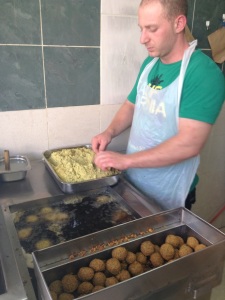Here’s my story of learning about the things they don’t tell you in a college brochure or in any acceptance letter.
The New York Times has a front page article today about the suicide rate and propensity of suicide in high-ranking schools [Campus Suicide and the Pressure of Perfection]. It tells of a high-achieving freshman at UPenn who sinks into a depression and nearly commits suicide when she realizes that as a straight-A student, sorority member, intern teaching elementary school-aged kids, and a participant in additional extra-curricular activities, she is simply not doing enough. She has no time to think, rest, develop as an individual or possibly consider that all these higher achievers around her are feeling as equally insufficient and overwhelmed as she is.
I remember when I got my first B in a class at the University of Arizona. I was distraught and it bothered me for months. I resolved to never let it happen again. I assumed at the time that this failure was a lack in motivation, studying, and dedication to the task at hand; but looking back, I doubt it.
I thought I was a generally good student, and definitely a high-achiever. I was enrolled in the Honors College. I was taking Arabic, and I was good at it. I was a double major in Creative Writing and Linguistics. I was slated to graduate early, despite the double major.
I thought I was in good shape until I started meeting students who were not only taking a 17-20 credit course load (I was taking 17), but were also working part-time, had one or two internships and independent studies, were taking trips to local attractions on the weekends, and were already applying for positions to launch their career into the stratosphere post-graduation. I met double-doubles: people who had two majors and two minors. I met triple-majors, who would graduate with a B.S. and a B.A. I met people taking two, and three language classes per semester. I met students who were already so buddy-buddy with their professors by the time the semester started that it felt like I was fighting a lost cause to introduce myself to them.
I was barely managing my straight A’s and a part-time job at a fast-food restaurant on the weekends. I was a transfer student who was shy, and the idea of asking a professor for independent study opportunities was enough to give me a panic attack. I felt under-read in literature when talking with my English buddies, and I felt under-exposed to cross-linguistic typologies and languages that my linguistic friends would discuss with gusto after class or over dinner.
The impression that everyone around me was doing twice as many things as I and with double the finesse and efficiency exponentially increased my feelings of inadequacy and failure; which in turn incapacitated me with fear and anxiety that kept me from pursuing opportunities that would help me more than graduating with a 3.94 GPA would.
I wish I’d done things differently. I wish I’d plucked up the courage to do more independent studies (I did do one year of thesis-focused independent studies), to engage with my fellow students more. I wish I’d done more than just percolate my fears and inadequacies into an ever-strengthening brew of self-disgust and hatred that recursively confirmed that I was, indeed, a failure, and that I would always be one.
I wish someone had told me that straight As don’t get you jobs after school- practical experiences and connections with professors and faculty did. I wish I’d pursued relationships with people who were more knowledgeable and smarter than me, who I deemed off limits because I wasn’t “cool” or “advanced” enough.
When you base your identity in excelling in academia and your best efforts are not enough, your identity takes a major blow. You find yourself crying in the library bathroom, or having a difficult time deciding where to go for lunch because you don’t want to risk running into someone you know who will see “I am a failure” written on your forehead just like you do. You will find time to marathon-watch a season of a TV show but not to work on your next project, because the mere thought of failing one more time leaves you paralyzed.
I started to come out of my shell in my final year of college. I went to Jordan to study Arabic, even though it didn’t contribute to my major or minor. I busted my butt on my thesis (though I still consider it a shadow of what it could’ve been). I took a job as a specialized learning tutor. I deepened friendships with professors. But it still didn’t seem like enough, and as I look to applying for grad school, it definitely doesn’t seem like enough.
When you base your image and identity academic excellence and that image is destroyed by failure, you begin searching for another source of identity. You start to realize how much your own identity is fused with the idea that you cannot fail. You start to realize how destructive and absurd an identity is based on a vacillating estimation of success.
You start fighting back against the feelings of anxiety and inadequacy, armed with the knowledge that you were created by a perfect God, who delights in you even when you can’t stand yourself. You start to realize that life is far more fulfilling when lived caring for others regardless of what they can offer you in academic circles. You realize that treating others as the unique, complex and imperfect individuals they are rather than treating them as competition or as a mere obstacle to your next goal makes life worth living again. You realize that you are starting to grow up.








